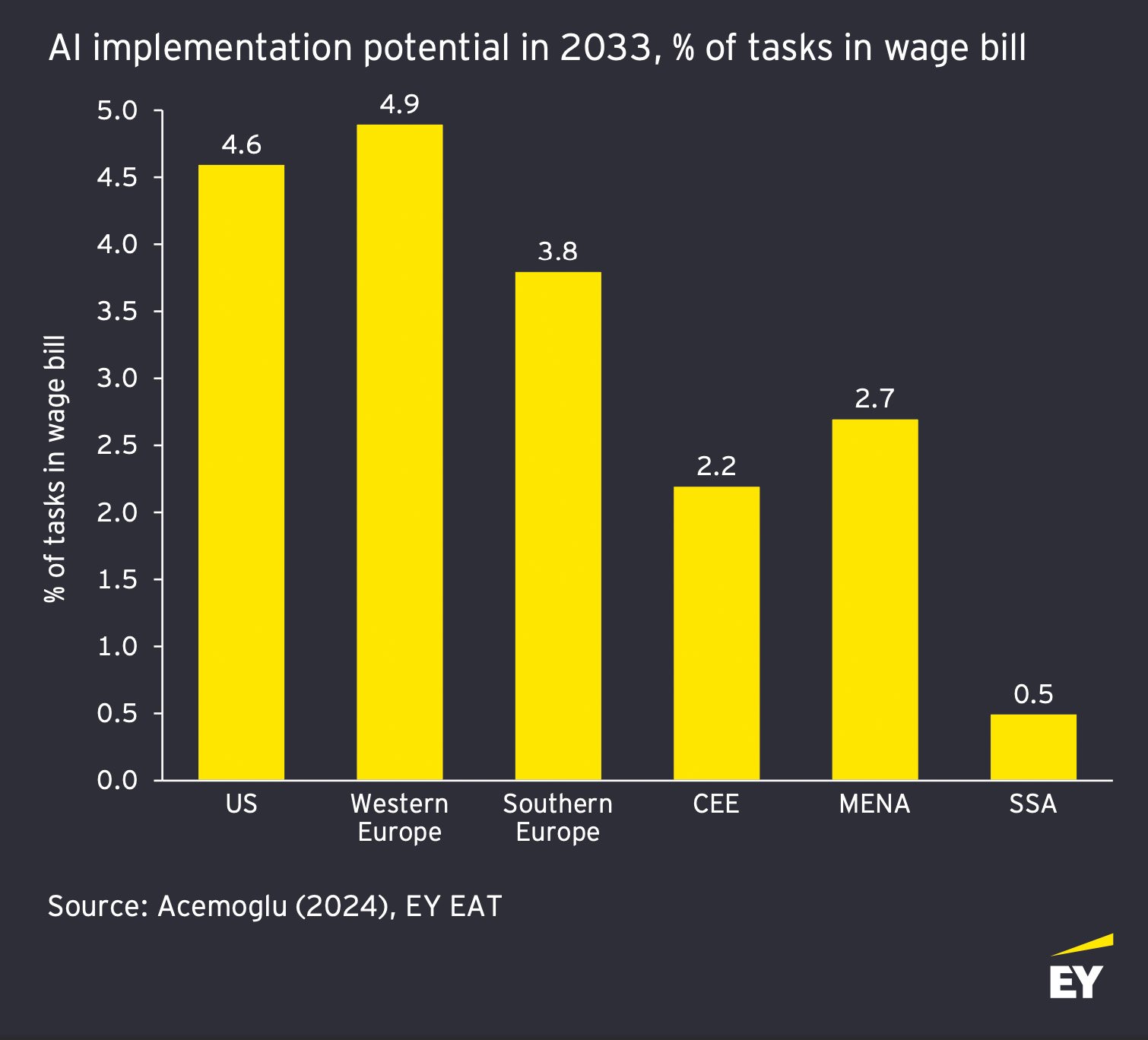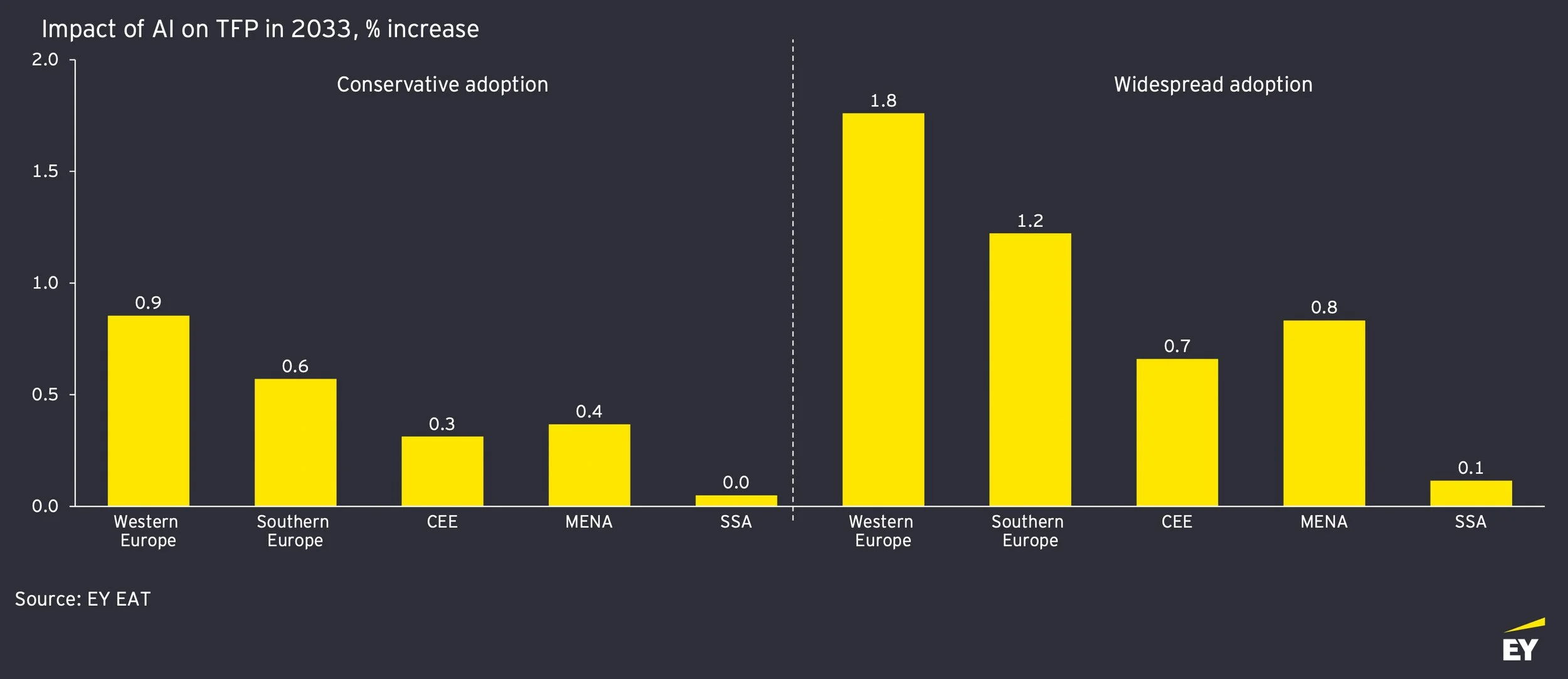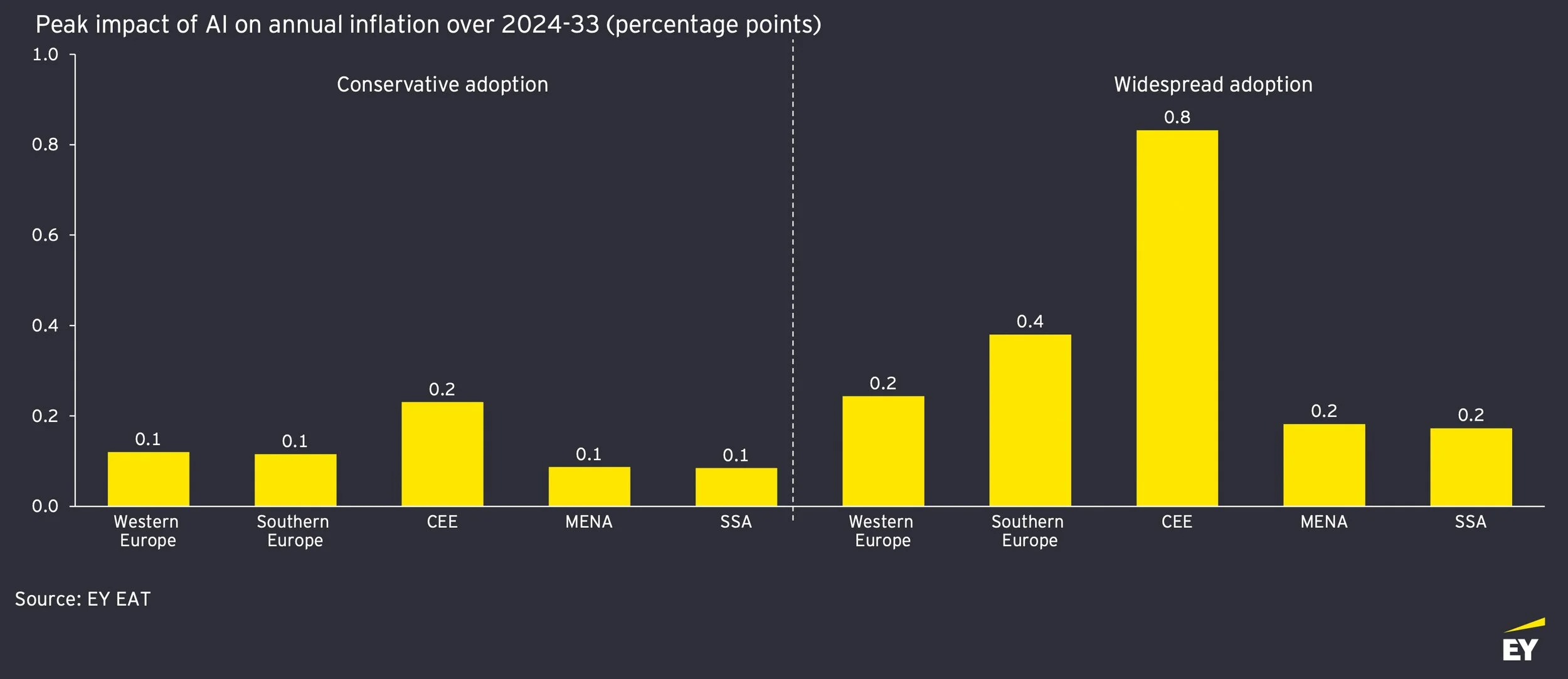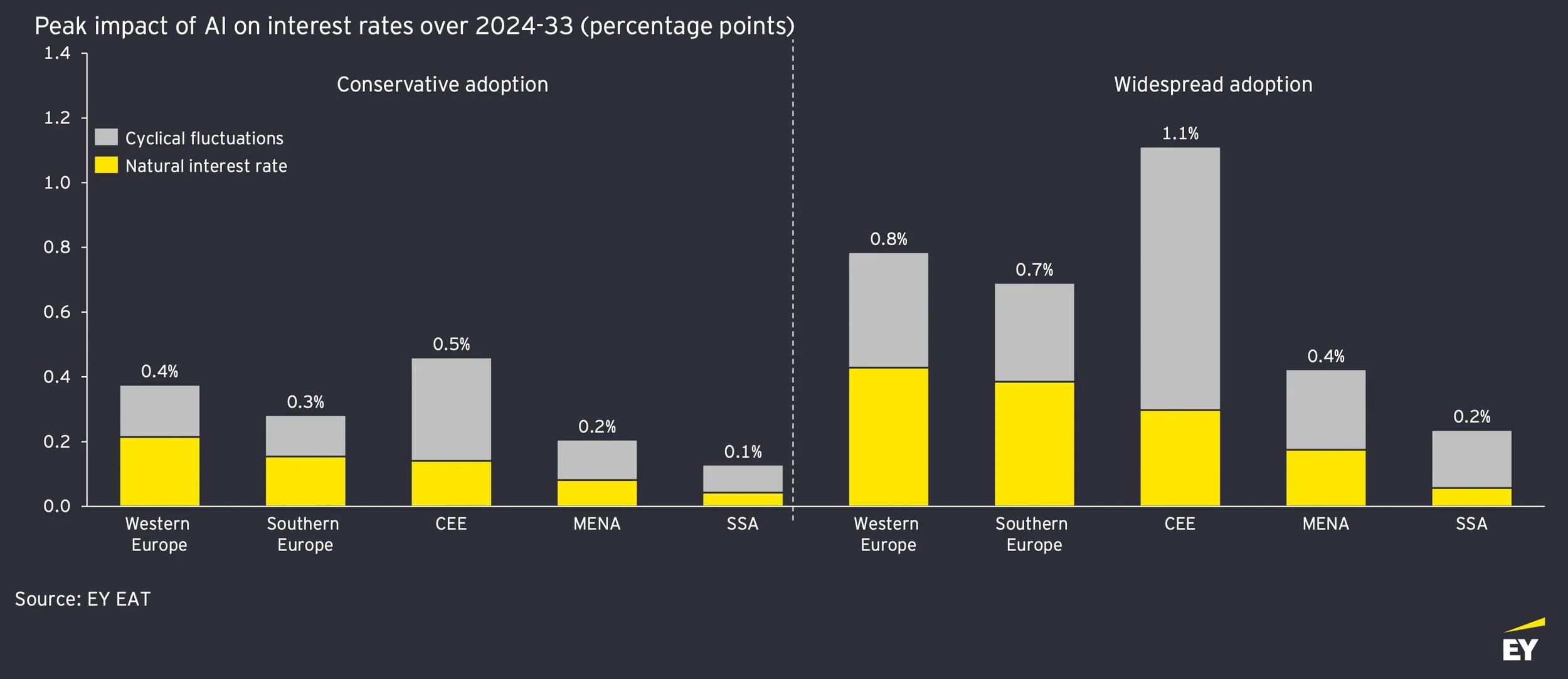How AI Will Reshape the Global Economy: Insights from IMF Forum
Image Credit: Mathieu Stern | Splash
The 12th IMF Statistical Forum, held on November 20-21, 2024, shed light on the macroeconomic consequences of artificial intelligence (AI) from both regional and sectoral perspectives. The study, presented by Marek Rozkrut and his team from EY, analyzed the transformative impact of AI on labour markets, productivity, GDP, inflation, and sectoral performance, emphasizing disparities across regions and industries.
[Read More: Unlocking $11 Million in Savings: The Power of Digital Twins in Business]
Labour Market Transformation: The Automation Divide
By 2033, AI is expected to automate 5% of tasks in high-income regions, notably in Western Europe and the United States.
Factors influencing AI-driven automation include occupational exposure, regional labour structures, and the economic benefits of automation, such as wage levels adjusted for purchasing power parity (PPP).
Adoption rates will be slower in regions like Sub-Saharan Africa (SSA) (0.5%) and Central and Eastern Europe (CEE) (2.2%), where economic benefits from automation are less pronounced.
AI's potential to reshape the labour market underscores the divide between developed and developing regions. While high-income countries leverage automation to enhance efficiency, regions with lower wage levels may lag due to reduced economic incentives for AI implementation.
[Read More: AI Agents Take the Lead: The Next Evolution in Workplace Automation]
Image Source: EY | 12th IMF Statistical Forum: Measuring the Implications of AI on the Economy
Investment Surge Driven by AI Adoption
AI adoption could drive investments in information and communication technology (ICT) significantly, mirroring trends from the ICT boom.
By 2033, Western Europe’s GDP contribution from AI-related ICT investments could rise by 1.7%, while SSA might see an increase of just 0.2%.
The impact varies depending on adoption scenarios: under conservative adoption, growth remains modest, while widespread AI adoption accelerates investments and GDP contributions across regions.
The disparity in investment highlights a need for policy interventions to bridge the gap. Countries with slower AI adoption must develop strategies to attract investments, leveraging their unique strengths to remain competitive in the global economy.
[Read More: Generative AI Price Wars: The Race to the Bottom or the Future of Affordable AI?]
Image Source: EY | 12th IMF Statistical Forum: Measuring the Implications of AI on the Economy
Boosting Productivity Through AI
AI is projected to increase total factor productivity (TFP) by 0.9%-1.8% in Western Europe. Other regions, such as SSA (0.0%-0.1%) and CEE (0.3%-0.7%), will see more modest gains.
Productivity improvements will stem from task automation, average labour cost reductions, and shifts in labour income shares.
Productivity gains from AI highlight its transformative potential. However, these benefits remain unevenly distributed, necessitating a focus on equitable AI integration to ensure global competitiveness.
[Read More: AI by the Numbers: Shaping the Future of Innovation]
Image Source: EY | 12th IMF Statistical Forum: Measuring the Implications of AI on the Economy
GDP Growth and Economic Output
AI-driven productivity and investment are expected to boost GDP, with Western Europe seeing increases of up to 3.7% under widespread adoption scenarios.
CEE stands out with a strong external demand-driven GDP boost.
The integration of AI offers a pathway to economic growth, but its benefits depend on effective policy frameworks that encourage balanced development across regions. For nations like CEE, leveraging external demand may serve as a critical driver for growth.
[Read More: AI Stocks in Focus: Opportunities and Challenges Amid Generative AI Surge]
Image Source: EY | 12th IMF Statistical Forum: Measuring the Implications of AI on the Economy
Inflation and Interest Rates: Modest but Manageable Impacts
Inflationary effects of AI adoption are estimated to range from 0.1 to 0.4 percentage points for most regions, peaking at 0.8 in CEE.
Interest rates could see moderate increases (0.1-0.8 percentage points), with peaks of 0.5-1.1 percentage points in CEE.
AI’s demand-driven inflationary impact poses manageable challenges for monetary policy. Central banks must balance these effects with the structural benefits of AI to ensure economic stability.
Image Source: EY | 12th IMF Statistical Forum: Measuring the Implications of AI on the Economy
Image Source: EY | 12th IMF Statistical Forum: Measuring the Implications of AI on the Economy
Sectoral Impacts: Leaders and Laggards
Healthcare and advanced manufacturing are poised to experience the most significant TFP and output gains.
Sectoral growth is influenced by shifts in comparative advantage and capital flows, with high mobility amplifying AI’s benefits.
Sectoral disparities in AI’s impact suggest that strategic investments in high-potential industries could yield substantial returns. Policymakers should prioritize sectors like healthcare and advanced manufacturing to maximize AI’s economic contributions.
Image Source: EY | 12th IMF Statistical Forum: Measuring the Implications of AI on the Economy
Conclusion: Navigating AI’s Uneven Terrain
EY’s findings emphasize that AI’s economic impact will be profound yet uneven across regions and sectors. Western Europe and the United States are set to benefit the most, while developing regions face slower adoption and limited gains. Policymakers worldwide must address these disparities through targeted investments and inclusive strategies to harness AI’s full potential.
AI’s transformative role in reshaping the global economy calls for critical engagement, balancing innovation with equitable growth to ensure a sustainable future.
[Read More: Insights from Geoff Wilson & Team: Navigating the AI-Driven Market]
Source: 12th IMF Statistical Forum





























